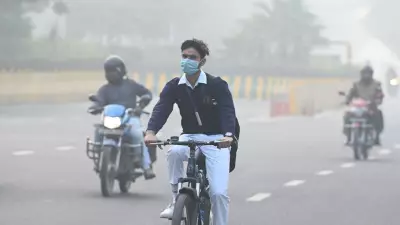
The shadow of nuclear weapons testing continues to loom over India, with new evidence revealing how radioactive fallout from decades-old detonations still permeates our environment and affects public health. While the mushroom clouds have long dissipated, their invisible legacy remains embedded in our soil, water, and food chains.
The Persistent Threat in Our Ecosystem
Radioactive elements released during nuclear tests, including strontium-90 and cesium-137, have proven remarkably persistent in the environment. These dangerous isotopes continue to cycle through ecosystems, entering agricultural systems and eventually making their way into the human food chain. Studies show that certain regions of India still bear detectable levels of contamination from both domestic and international nuclear testing programs.
Health Implications for Current Generations
Medical researchers have documented concerning health patterns in populations exposed to nuclear fallout. The consequences include:
- Increased rates of certain cancers, particularly thyroid cancer
- Higher incidence of birth defects and genetic abnormalities
- Compromised immune systems in affected communities
- Long-term radiation exposure leading to chronic health conditions
Environmental Contamination Timeline
The problem isn't limited to historical testing sites. Atmospheric nuclear tests conducted by various nations during the mid-20th century spread radioactive particles across global wind patterns, affecting regions far beyond the original test locations. This global dissemination means that even areas thousands of kilometers from test sites received measurable fallout.
Ongoing Monitoring and Research
Scientific institutions across India continue to monitor radiation levels in:
- Soil and water samples from multiple regions
- Agricultural products and dairy items
- Human tissue samples from affected populations
- Atmospheric particulate matter
The findings consistently show that while radiation levels have decreased since the Comprehensive Nuclear-Test-Ban Treaty, the residual effects remain scientifically significant and medically concerning.
Looking Toward the Future
Environmental scientists emphasize that understanding this nuclear legacy is crucial for developing effective public health strategies and environmental remediation efforts. The continued presence of radioactive elements serves as a powerful reminder of nuclear weapons' long-term consequences, informing current debates about nuclear energy and non-proliferation efforts.
As research continues, the scientific community urges greater awareness of how past nuclear activities continue to shape our present environmental and health landscape, highlighting the importance of responsible nuclear policies for future generations.





